Related Cooling Products
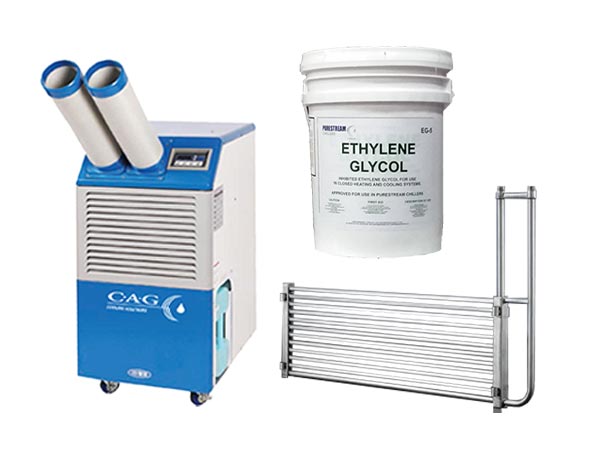
Related Cooling Products
CAG offers a selection of related cooling products including portable spot coolers, room cooling units, glycol as well as quick connect chilled water piping. For questions regarding your specific cooling application, please feel free to contact us.
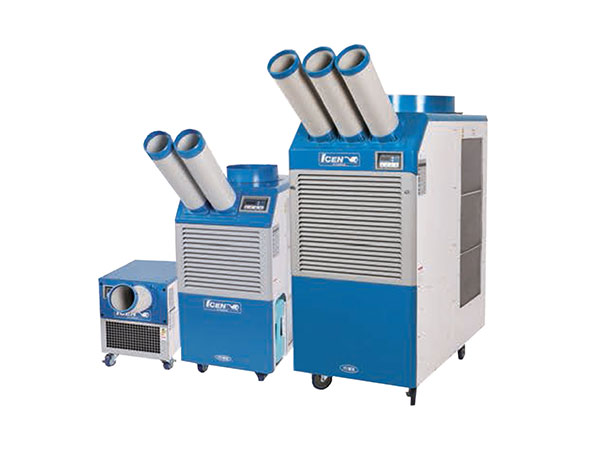
Spot Coolers and Portable AC Units
CAG Technologies now provides spot cooling and room cooling for areas where cooling of a large area is not practical like factories, and large open areas etc. It is more economical to provide direct cool air onto people or material instead of cooling a large area with a central A/C system. These units also have a room cooling function for closed areas to control the temperature of a room or specific area. They are available in air-cooled, water-cooled and heat pump versions with sizes ranging from 1 to 5 ton.
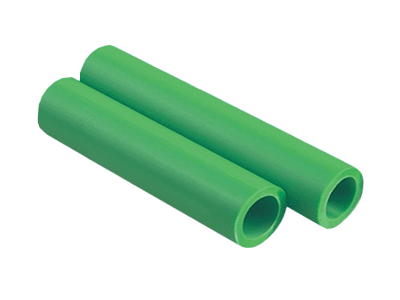
Quick Connect Piping
The Purestream FREEZE LINE piping system is designed to transport chilled water and many other fluids and is ideal for use in process cooling applications. The piping and fittings are constructed of corrosion proof heavy gauge PVC plastic that is compatiable with chilled water and glycol water mix. It is designed to be easily and quickly installed by plant maintenance staff or plumbing contractors. All that is required by the installer is a saw or pipe cutter and deburring tool and the pipe can be cut to size and the fittings applied as required. The pipe system can be mounted with typical pipe hangers or mounted along a wall or beside equipment by installing our pipe brackets and then assembling the pipe to create a rigid high quality pipe system that can be easily adapted. The pipe system is also compatible with dietary fluids and many other aggressive and non-aggressive chemical fluids.
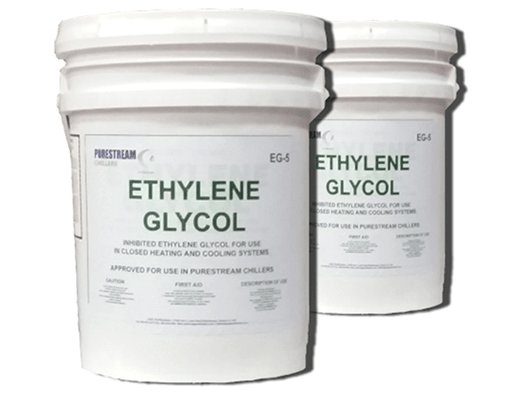
Inhibited Ethylene Glycol
Inhibited Ethylene Glycol for use in closed heating and cooling systems. Approved for use in purestream chillers. Please call for pricing.
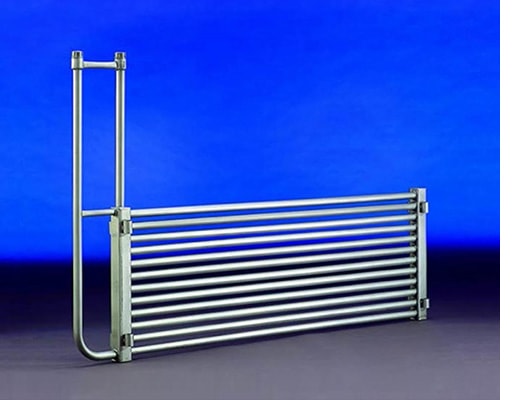
Purestream Immersion Cooler Kits
Immersion Coolers are Water to Glycol Heat Exchanger grids that can be submerged into an existing tank or new design to indirectly cool a process fluid. The chiller then pumps very cold Glycol (less than 0° C) through the Closed Loop. The Glycol quickly absorbs the heat from the Process fluid rejecting it using the chillers refrigeration system. This is a cost effective way to introduce cooling into a process, as opposed to an expensive engineered direct cooling system. These Heat Exchangers are typically Stainless Steel or Titanium depending on the type of fluid to be cooled.
Utilizing Glycol allows the use of a Heat Transfer fluid that can be cooled below the freezing point of water to increase cooling times and heat transfer rates. Applications include Anodizing, Acid Bath, Metal Finishing, Oil Cooling, Wort chilling (Brewing industry) Batch Cooling and tempering City Supply Water and/or potable water supplies that is to be consumed in a process.
Call or email us with your application and we will do our best to find a cost effective and simple solution with a quick delivery.
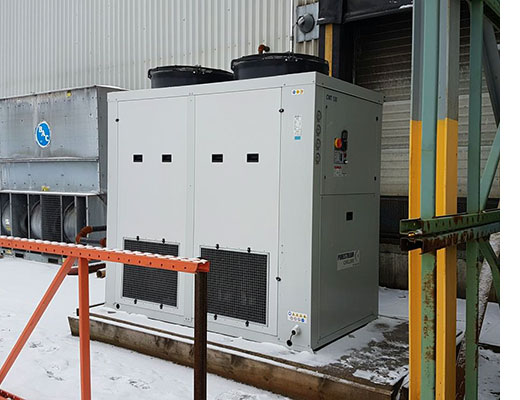
Chiller vs Cooling Tower
We often get the question as to when to use a chiller and/or cooling tower for process cooling.
The easy answer is "What temperature water/glycol do you need?"
If your requirements are for 90° F (32° C) then you most likely need a Cooling Tower or Fluid Cooler. Since you are relying solely on the Ambient Temp to cool your Glycol, selection of this FAN ONLY machine is imperative.
If you require Water or Glycol year round to be between 80 - 90° F then use of chiller and Fluid Cooler is recommended. You can use the Fluid Cooler ( DRY Cooler) when Ambient Temp makes it more efficient to do so and run the chiller when outdoor temps are higher or more tight control is required.
If you require stable Temperatures below 75° F (24° C) then you most certainly require an Air or Water Cooled Chiller. An Economizer Fluid Cooler could still be used in conjunction with a chiller. A Chiller utilizes a refrigeration system to control and remove heat from the Glycol Loop. This Allows the user to set a temperature and not be reliant upon the outdoor condition.
A Purestream Chiller only provides the cooling load required at any given ambient condition and is extremely efficient at Part Load due to it's design. By only activating the number of compressors required it is ideal for multiple and intermittent loads. The multiple scroll design provides better redundancy then a Variable Speed Scroll and will also maintain a low load condition without having to ramp up to 100% to maintain oil return.
The Harder question is if my Glycol or Water temperature required is 90° F, can I still use a chiller?
The answer is yes, if replacing the entire system or modifying/designing a new one.Cooling towers use a higher flowrate of warmer water to accomplish the heat transfer required. Maybe it is worth investigating a lower flowrate at a cooler supply temp for your machinery. Every system is different and site conditions can influence the type of system required.
The Recirculating Chiller can offer much better control, but may use more energy as you are now running compressors instead of just fans. However you need to look at the big picture and the amount of downtime and maintenance issues caused by not having a reliable source of cool water in your plant.
On some projects the installation of a mixing valve between the supply and return of the chiller can allow you to return 100° or higher water temp from your process, and still protect the chiller or have it run outside the standard range.
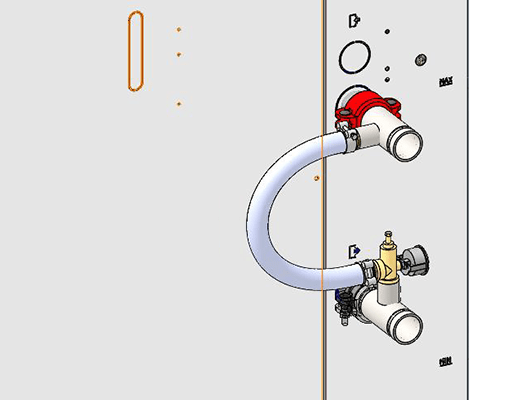
Pressure Operated Bypass Valves
The Bypass Valve is an important part of any small to medium size process chiller application. The Primary function is to protect the chiller should any number of situations impede flow.
Located between the supply and return on the outlet of the chiller it is designed to open should the pressure in the closed loop go beyond the preset level. Example: The Supply valve is inadvertently closed or the machinery being cooled has its own throttling valve, that opens or closes when cooling is needed.
Both situations cause an increase in the pressure of the supply loop. The POBV will respond to the increased pressure by opening and begin bypassing water or Glycol to the Return Line. The chiller will sense the reduction in load and adjust the number of compressors running or shut off completely. The pump will continue to run the loop in Bypass mode. Once the inlet switch on the load machine opens, the chiller will respond by closing the bypass valve, thus supplying chilled water or Glycol to the loop. The chiller will sense the increase in RWT and restart the compressor(s)
The Secondary Function will also allow a single PURESTREAM CHILLER with Adaptable load Operation to supply Chilled Water or Glycol to multiple loads.
An example would be in the brewing industry or any cooling loop that has previously been setup to run with City Water. Water is diverted around the brewing process depending on what step the process is in. Often these systems have a switch that opens and closes to feed water into the cooling jacket in the fermentation tank or in the Wort Chiller. In a chiller without a Bypass Valve this would not be possible as closing the valve would DEADHEAD the pump. The POBV will open to allow the system to continue to run at a lower loop flow and also scale back the refrigeration effect to match the load.
Welcome to CAG Technologies
What can we help you with today?
Please choose from one of our product categories below and one of our technical specialists will assist you promptly.